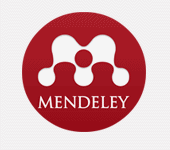The Construction of Stunting Issues in Social Media: Analysis of Public Issues in Digital Health Campaigns in Indonesia
Abstract
In the digital era, social media has evolved into a dominant public space that shapes discourse, mobilizes participation, and influences public perception—especially in health communication. This study examines how the issue of stunting is socially constructed in Indonesia’s digital space and how public health campaigns on social media influence public perception and engagement. Using a qualitative descriptive approach and Fairclough’s Critical Discourse Analysis (CDA), complemented by Entman’s framing theory and light quantitative trend analysis, this research analyzes the narratives, symbols, and interactions surrounding stunting-related digital campaigns such as #CegahStunting and #BapakAsuhAnakStunting The findings reveal that stunting is framed as a collective moral issue tied to the nation's future, with families—especially parents—portrayed as central actors in its prevention. Social media content constructs this issue through persuasive language, hashtags, visual storytelling, and the strategic use of influential public figures and institutions. Framing elements such as problem identification, causal attribution, moral evaluation, and treatment recommendations are found to be consistently applied in constructing public meaning and shaping behavior. Public engagement manifests through digital activism, content sharing, and the emergence of grassroots health communities. However, the study also identifies counter-narratives criticizing the moralistic framing that disproportionately blames families while overlooking structural inequalities This research contributes to the discourse on health communication and public engagement by highlighting the dual function of social media as both a platform for education and a contested space for narrative negotiation. It offers practical implications for more inclusive, participatory, and context-sensitive digital health campaigns in Indonesia’s multisectoral stunting reduction strategy.
Keywords
Full Text:
PDFReferences
Ajzen, I. (1991). The theory of planned behavior. Organizational Behavior and Human Decision Processes, 50(2), 179–211. https://doi.org/10.1016/0749-5978(91)90020-T
Arora, A. (2019). Health information seeking on social media: The role of perceived trust, efficacy, and outcomes. Journal of Health Communication, 24(2), 184–192. https://doi.org/10.1080/10810730.2019.1583704
Astuti, Y., & Afifah, N. (2020). Efektivitas kampanye vaksinasi melalui media sosial Instagram terhadap peningkatan minat vaksinasi remaja. Jurnal Promosi Kesehatan Indonesia, 15(2), 125–132.
Berger, P. L., & Luckmann, T. (1966). The Social Construction of Reality: A Treatise in the Sociology of Knowledge. New York: Anchor Books.
Entman, R. M. (1993). Framing: Toward clarification of a fractured paradigm. Journal of Communication, 43(4), 51–58. https://doi.org/10.1111/j.1460-2466.1993.tb01304.x
Fairclough, N. (1995). Critical Discourse Analysis: The Critical Study of Language. London: Longman.
Handayani, T. A., et al. (2022). Peran media sosial dalam diseminasi informasi COVID-19 di Indonesia: Telaah kasus akun pemerintah. Jurnal Komunikasi Kesehatan, 13(1), 45–56.
Kemenkes RI. (2022). Hasil Survei Status Gizi Indonesia (SSGI) Tahun 2022. Jakarta: Kementerian Kesehatan Republik Indonesia.
Kemenkes RI. (2023). Pedoman Komunikasi Perubahan Perilaku Penurunan Stunting. Jakarta: Direktorat Gizi Masyarakat.
Kominfo RI. (2022). Laporan Tahunan Penanganan Hoaks Kesehatan di Media Sosial. Jakarta: Kementerian Komunikasi dan Informatika.
Kurniasari, N., & Indriani, N. (2021). Pengaruh kampanye kesehatan di media sosial terhadap perubahan sikap masyarakat tentang stunting. Jurnal Ilmu Komunikasi, 19(1), 34–46.
McCombs, M. E., & Shaw, D. L. (1972). The agenda-setting function of mass media. Public Opinion Quarterly, 36(2), 176–187. https://doi.org/10.1086/267990
Moorhead, S. A., Hazlett, D. E., Harrison, L., Carroll, J. K., Irwin, A., & Hoving, C. (2013). A new dimension of health care: Systematic review of the uses, benefits, and limitations of social media for health communication. Journal of Medical Internet Research, 15(4), e85. https://doi.org/10.2196/jmir.1933
Mutaqin, A., et al. (2024). Peran media sosial dalam perubahan perilaku gizi ibu dan anak. Jurnal Gizi dan Kesehatan Masyarakat, 12(1), 77–88.
Nasrullah, M., & Rachmawati, E. (2021). Strategi framing dalam kampanye digital #CegahStunting: Studi analisis isi konten Instagram Kemenkes. Jurnal Kajian Komunikasi, 9(2), 143–156.
Nurfatimah, L., Fitria, M., & Hidayat, R. (2023). Efektivitas kampanye #BapakAsuhAnakStunting di media sosial terhadap peningkatan kesadaran masyarakat. Jurnal Promkes: The Indonesian Journal of Health Promotion and Health Education, 11(2), 91–101.
Peraturan Presiden Republik Indonesia Nomor 72 Tahun 2021 tentang Percepatan Penurunan Stunting. (2021). https://peraturan.bpk.go.id/
Rahmawati, I., & Kurniawan, R. (2022). Kampanye digital dan penguatan peran posyandu: Studi pada ibu muda di daerah urban. Jurnal Promosi Kesehatan, 17(3), 212–221.
Rogers, E. M. (1962). Diffusion of Innovations. New York: Free Press.
We Are Social & Hootsuite. (2025). Digital 2025: Indonesia Report. https://datareportal.com/reports/digital-2025-indonesia
Wang, Y., McKee, M., Torbica, A., & Stuckler, D. (2019). Systematic literature review on the spread of health-related misinformation on social media. Social Science & Medicine, 240, 112552. https://doi.org/10.1016/j.socscimed.2019.112552
DOI: http://dx.doi.org/10.30829/jai.v14i1.25397
Refbacks
- There are currently no refbacks.
Copyright (c) 2025 Muhammad Faisal Hasrimy, Mailin Mailin

This work is licensed under a Creative Commons Attribution-ShareAlike 4.0 International License.





